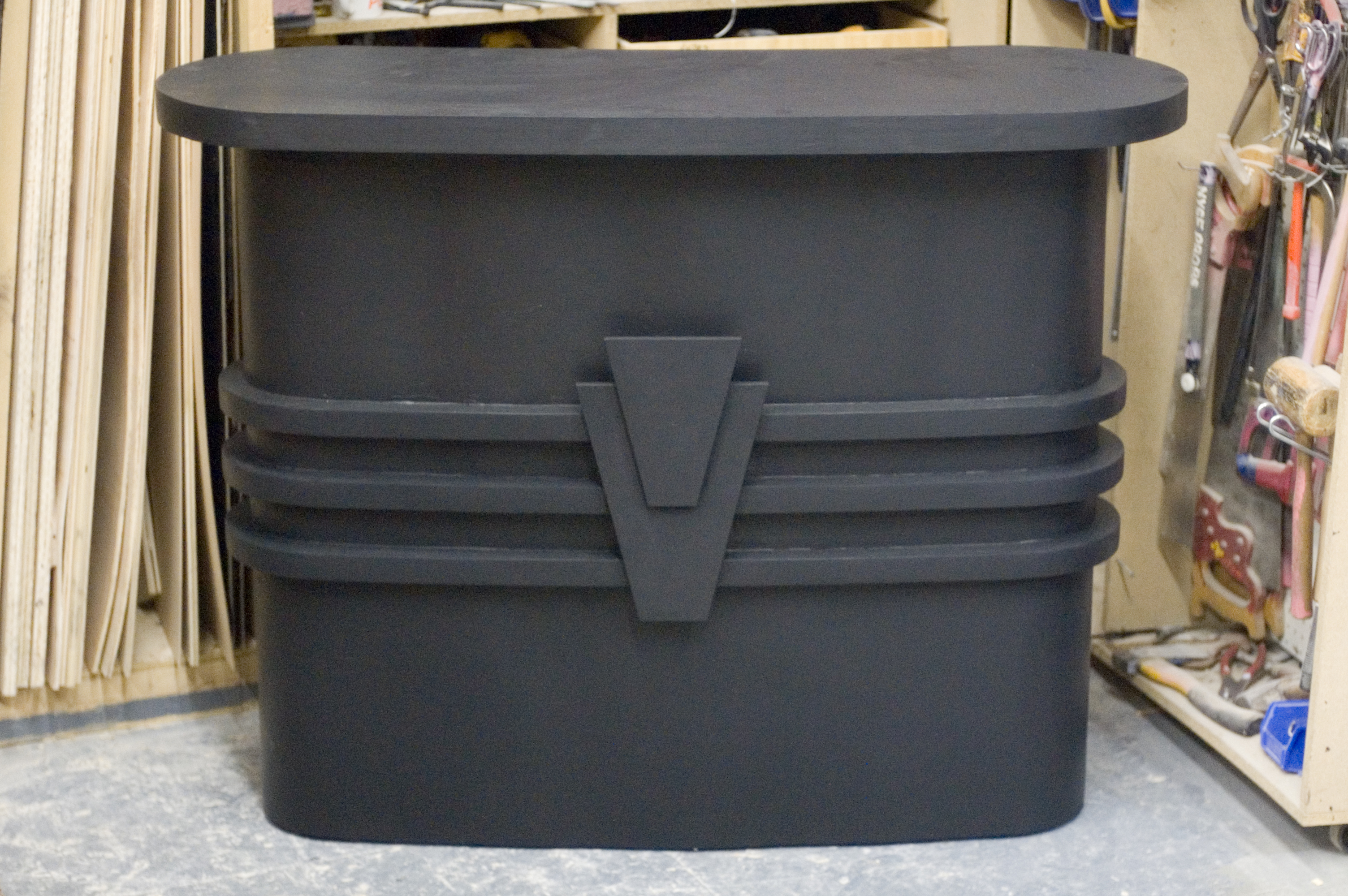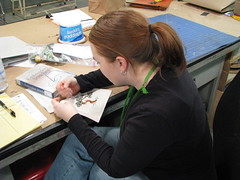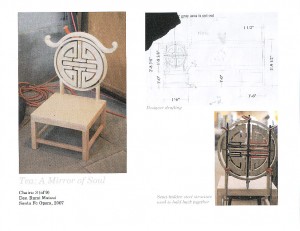I recently finished building props for Why Torture is Wrong, And the People Who Love Them, at the Public Theatre. It’s the world premiere and is written by Christopher Durang.
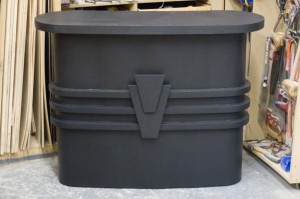
One of the more complicated and interesting pieces I had to make was this bar. The top is kidney-shaped, and the whole base has an elliptical footprint.
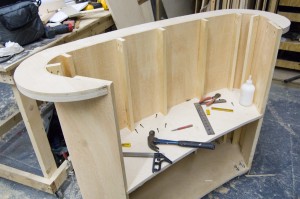
You can get a better picture of the overall shape of the piece in the picture above. You can also see how I framed it out.
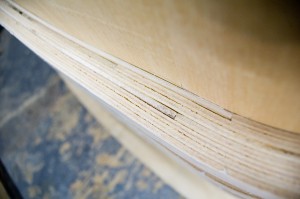
Above is a closeup of one of the three strips which run across the center of the bar. They stuck out an inch and a half, so I built up strips of wiggle-wood and lauan. I used lauan because it was cheaper than the wiggle-wood, and the front of the bar had a gentle enough curve for the lauan to handle.
If you’ve ever worked with wiggle-wood, you know that it leaves a rough surface. There are any number of ways to make it smooth, from covering it with some kind of laminate or veneer to coating it with some kind of filler. For this piece, Jay, the prop master, told me an easy recipe for a coating. I mixed about 4 parts of joint compound to about 1 part white glue, and added a touch of water until I got an easily spreadable consistency that wouldn’t drip or run. Joint compound can be sanded very smooth, and is easy to work with, but it tends to crack and flake off over time. The addition of the glue helps give it enough flexibility to keep that from happening.

